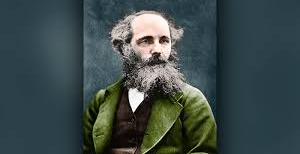Where did Maxwell’s electromagnetic theory go wrong? James Clerk Maxwell’s electromagnetic theory, formulated in the 19th century, is a cornerstone of classical electromagnetism. However, it isn’t so much that the theory “went wrong” as that it had limitations that were later addressed by more advanced theories. Here are some of the key limitations:
Special Relativity:
Maxwell’s equations assume that the speed of light is constant in all frames of reference, but they don’t incorporate the full implications of this fact. Albert Einstein’s theory of special relativity, developed in 1905, extended Maxwell’s work by explaining that space and time are not absolute, and that the speed of light is constant for all observers. This led to a more comprehensive understanding of the relationship between electricity and magnetism.
Quantum Mechanics:
Maxwell’s theory is a classical theory, meaning it does not take into account the quantum nature of particles and fields. Quantum electrodynamics (QED), developed in the mid-20th century, provides a more complete description of electromagnetic interactions by incorporating quantum mechanics. QED describes how light and matter interact at the quantum level, explaining phenomena that Maxwell’s theory cannot, such as the behavior of individual photons and the fine details of atomic spectra.
Absence of Quantum Field Theory (QFT):
While Maxwell’s equations describe the electromagnetic field classically, they do not account for the quantization of the field. QFT, of which QED is a part, is a framework that combines quantum mechanics with special relativity to describe how particles and fields interact. This theory is essential for understanding phenomena at very high energies and small scales, where classical descriptions fail.
Lack of Inclusion of Other Forces:
Maxwell’s theory only describes the electromagnetic force and does not account for the other fundamental forces in nature, such as the strong and weak nuclear forces and gravity. The Standard Model of particle physics, developed later, integrates the electromagnetic force with the weak force into the electroweak theory, and further advances are made to unify all forces.
Explanation of the Photoelectric Effect:
Maxwell’s theory could not explain the photoelectric effect, where light striking a material causes the emission of electrons. This phenomenon was explained by Albert Einstein in 1905 using the concept of photons, discrete packets of energy, which is a quantum mechanical concept.
While Maxwell’s equations were not “wrong,” they were limited to the classical domain and could not account for phenomena that require a quantum or relativistic description. The developments in physics over the 20th century extended and refined our understanding, building on Maxwell’s foundational wor











